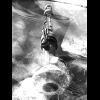Leaderboard
Popular Content
Showing content with the highest reputation on 12/16/2022 in all areas
-
1 point
-
Hi! This is one melodic piece i wrote some time ago. I later intented it for small band group, so the pdf file has only melody and chords. And players can add background and second voice and also solo. C part is also ad libitum. the Mp3 file has a different background in A part. structure is AB-8 bar or 16 bar solo-CCA, but there is no solo part in the mp3 file, so it is ABCCA. EDIT: I added live recording (clarinet solo) mp3 file1 point
-
Hello! I was only aware of his Op. 33 Nocturne, but I am now listening to the other that you mentioned, the D# -- op. 13 -- and I also hear a little of that sound in your piece. It was a pleasure!1 point
-
Have you ever written a Theme and Variations? Try writing a theme (which from your plethora of posts, you clearly can do), and then write a set of variations mixing up different ways of executing the theme. Yes, this is a challenge1 point
-
I'd say just make sure to give plenty of rest for them to switch. You may find that your music turns out better than you could have hoped for giving yourself more restrictions. Depending on what you're going for, it's not to say that it needs to be changed. You could surely just keep it in mind for future music rather than spend hours continuously editing a current piece. Up to you though, and if you make changes to the instrumentation, let me know and I'll check it out. Well, I was referring to the rhythms rather than orchestration or anything like that. I just saw a lot of eighth note phrases, and even though that's fine in spots, I think varying up the rhythms a bit could give it some more character. In a recent piece of mine, I had quarter note block chords that I just made dotted quarter-eighth-quarter-quarter for that vary reason. Sometimes even just a little bit of change in a stagnant rhythm can go a long way1 point
-
Hey thanks! I haven't heard these before, but there's very little from Barber that I don't like. I see two nocturnes by him, which one were you talking about? I'm assuming D# with the same tonal center? Anyways, thanks again for checking this out! Hi there Henry Yeah, I debated naming the chords in this, but the double flats made sense to be for the chords from a compositional point of view, yet I toyed with the idea of just making it more plain to the performer. I'm not sure which is "correct", but in the end I just tried to make it make sense compositionally. I like that you took the gypsy as a character going through a journey. I named it this because, well, I didn't really feel like I had a prompt to write about, more just absolute music and what I was feeling...or something like that. I feel like my life is like that of a gypsy sometimes...when I'm performing, I sometimes don't know where I'll be sleeping, or the level of comfort I'll have even when I do. This is an autobiographical piece, written about me and my journeys playing gigs in places all over Colorado. Thanks for checking it out!1 point
-
The three movements of this piece are subtitled: I - Melting Glacier II - The Veldt III - Mountain Climb The instrumentation is for string orchestra with 2 Flutes, 2 Horns in F, Glockenspiel, Vibraphone, Marimba, and Tambourine. I used Musescore since I don't yet have any Vibraphone VST's. Let me know what you think. I tried to create some thematic associations between movements. Thanks for listening and for any critiques, suggestions or observations that you may have!1 point
-
Great beginning! It really sets the mood to be exotic especially in the extoic E flat minor. Good harmonic colour for the theme I! I especially like the use of double flat in bar 14 and other simialr places. It really gives some chilling apperance to the performer. I remember Chopin in his op. 25 no.10 etude write a German sixth chord with all the double sharps. The visual certainly affect how performers interpret it. As @Omicronrg9 said, the harmonic colour is so varied that makea the seemingly common left figuration uncommon. For the cadenza in bar 66-71, I find it somewhat too showy, maybe because it's played by a program! With added expression by real performers that will be absolutely fine. I love the change of rhythm in bar 74. It certainly depicts how fleeing and free the gypsy is rhythmically, after developing it harmonically. I don't feel it detached here since the harmonycis maintained tightly. Good job here! I love the accelarando to bar 119. It gives me the feeling that the Gypsy is escaping from something. He seems to succeed with light hearted rhythm and melody in bar 132 but later found it a trap, and great climax in bar 155-158! The section started at b. 162 gives a firm feeling that escape is futile. The materials reappear in a developed and more firmed manner. And the ending is so great! I love that falling contour with that harmonic colour. Overall a great character piece! Exotic and exciting with humourous touches too! Very well done! Henry1 point
-
This is gorgeous! The chord progressions and melodic shaping at the beginning remind me of Barber's Nocturne and his Piano Sonata, both pieces I love (especially the Nocturne). Were you inspired by him, by any chance?1 point
-
Hello, thank you so much for the kind words and thoughtful feedback! I listened to your piece, "A Verdant Dawn", last weekend and was blown away. I will certainly be listening to more of your music! Yes, all the written parts were meant to be played simultaneously. Since some other users expressed confusion about the ensemble size, I've begun an attempt at creating another version where one player can switch between oboe and English horn, and one between flute and piccolo. I have no experience in this department (writing for more than one instrument per player) and it may take me a while to create a cohesive sound that doesn't leap around wildly or create potentially less powerful chord voicings as it does right now, since those instruments are an octave apart. Any advice on how to handle alternating the instruments would be appreciated. 🙂 Perhaps it would help to break up the "sameness" as well? Re: Range: I have seen that there are low A extensions for bassoons, but (correct me if I'm wrong) that they prevent the low Bь from being played and make intonation more difficult. Double-checking my score, though, I see no low Bь. I'll continue to research! I am glad you brought up the topic. Again, I appreciate your encouraging message!1 point
-
Adventure Strings and Adventure Brass are a composer's best friend on Pirate sort of works IMO1 point
-
Whatever's fine to you, I enjoyed it anyways :). I'm mainly an accordionist and I did write pieces for accordion (and more instruments + accordion) but some of them are quite old and I never thought of uploading them. Apart from that youtube hid a video of myself playing Hungarian Dance No.5 in the accordion despite Brahms is well, long long dead and those pieces have more than 120 years. I'm stuck in the 22nd nocturne. After I finish the last one (23rd) I want to compose a set of sonatinas-bagatellas-dunno yet for accordion and play them myself. Who knows how that'll end lol. Thank you for checking it out!!1 point
-
Magnificent beginning. The left hand never gets boring despite its monotony on the rhythm, possibly because the harmony you used is more than enough to keep me paying attention. The cadenza-like section M(67-71) sounds very good but I did not expect that it would precede the section that came. I'm not too much convinced about it. It sounds good but seems a little off from the ambient you were creating a few seconds ago, though it rapidly embeds you in it. Kinda big jumps there on M90-97 by the way, oof. The rhythm feels kind of jazzistic (?). The transition or small section that you make to go to 132 is one of my favourite parts. I have a liking for C#- most probably. M(132-162) has a lot of things. It sounds like ragtime up to 140. then turns into a more ambiguous feeling and ends in another passage that seems to have stains of almost everything you developed before. Regarding M175-End I have no complains, but I think the digital interpretation did not make justice to that part. I enjoyed it all. Overall a good and fresh piece that as Peter said, would really benefit a lot from a human interpretation. Kind regards!1 point






.thumb.png.8b5b433a341551e913a34392660bc95b.png)